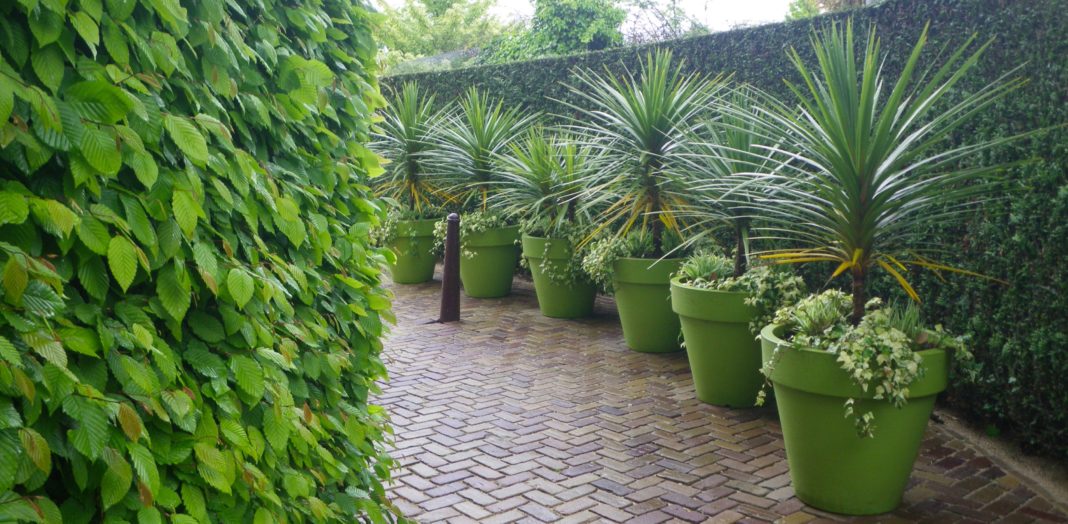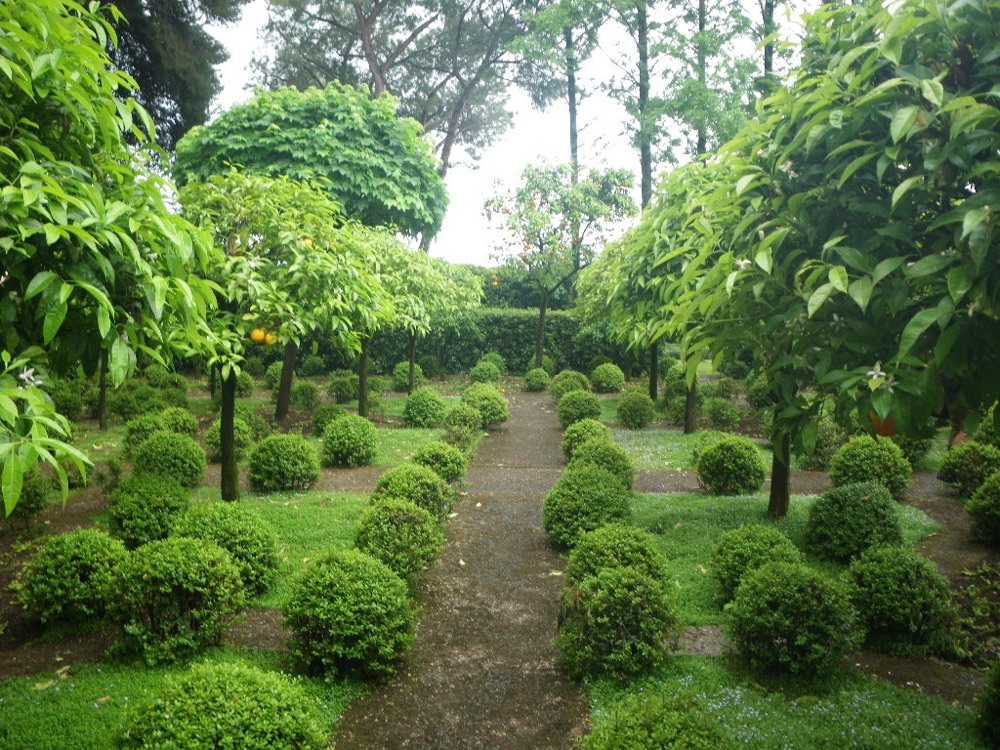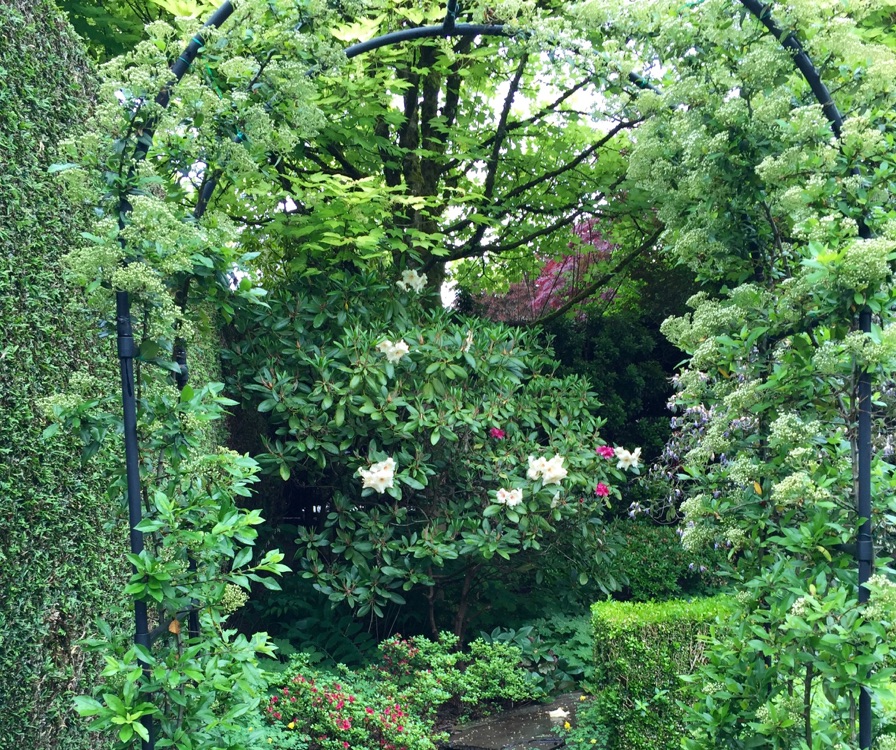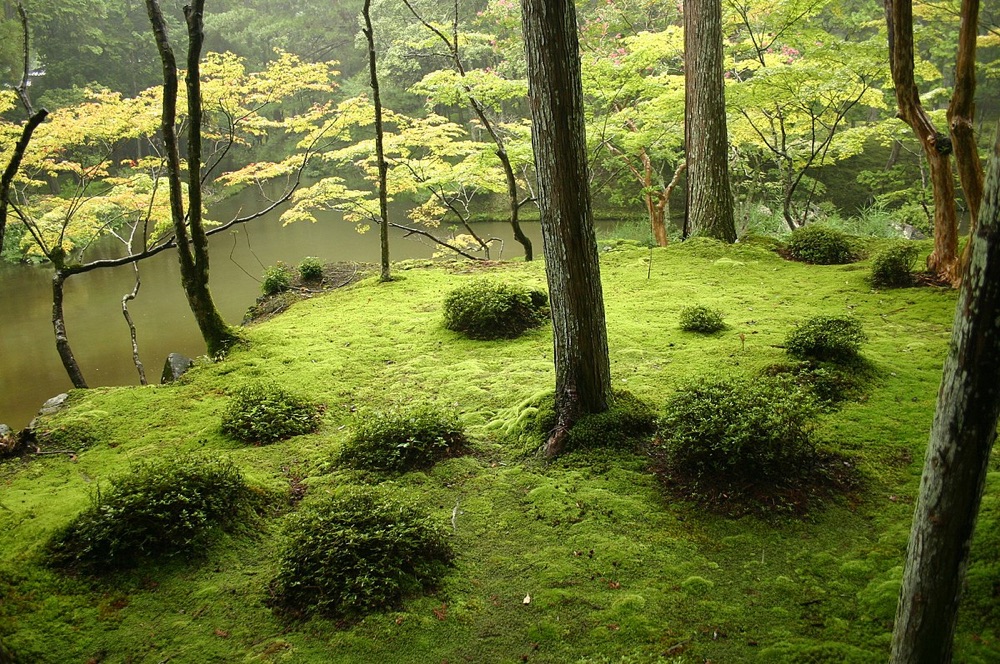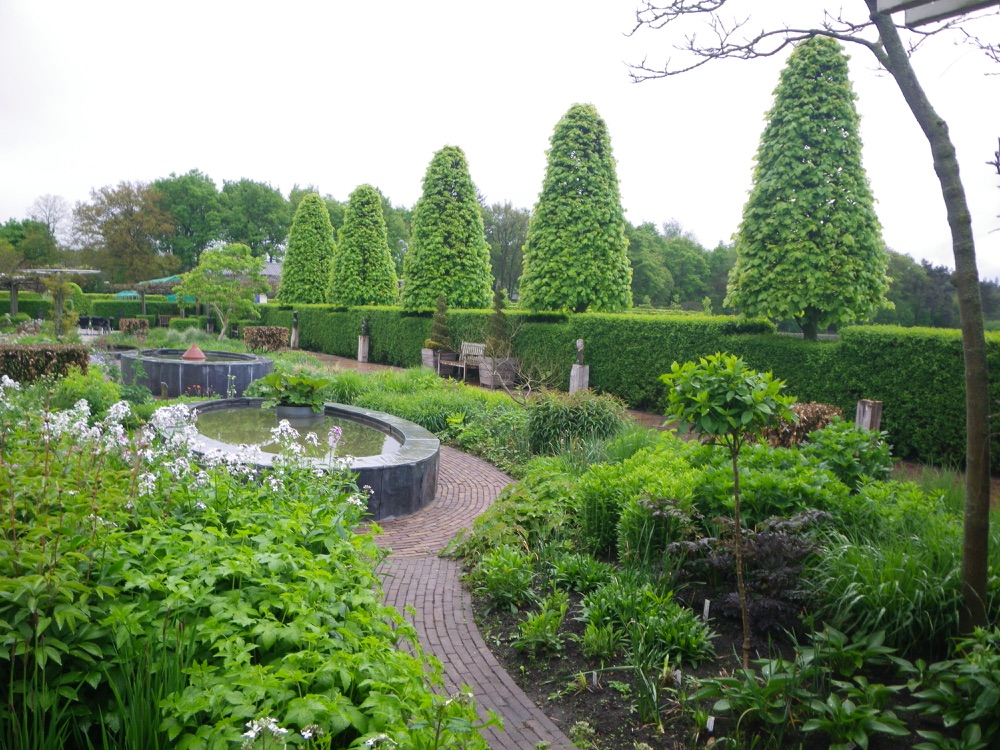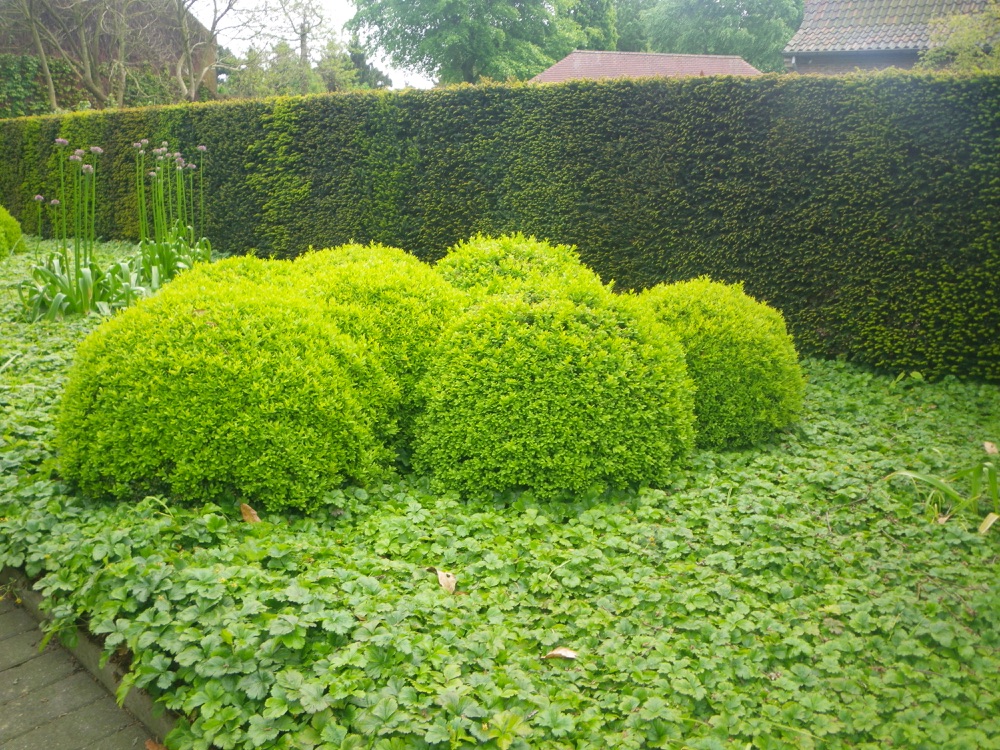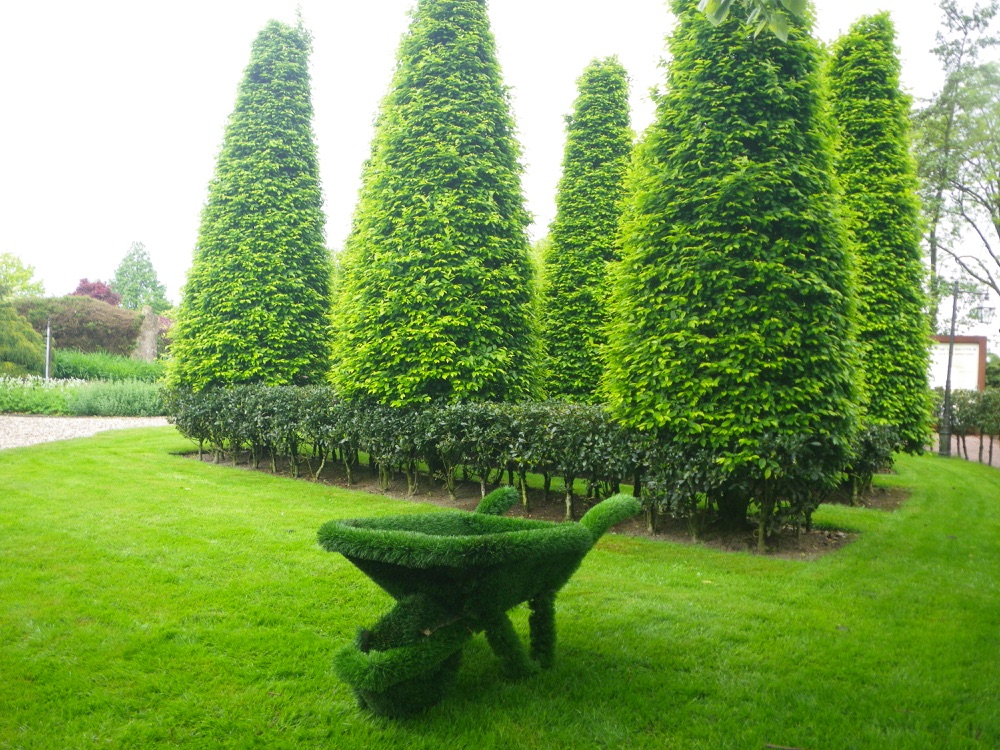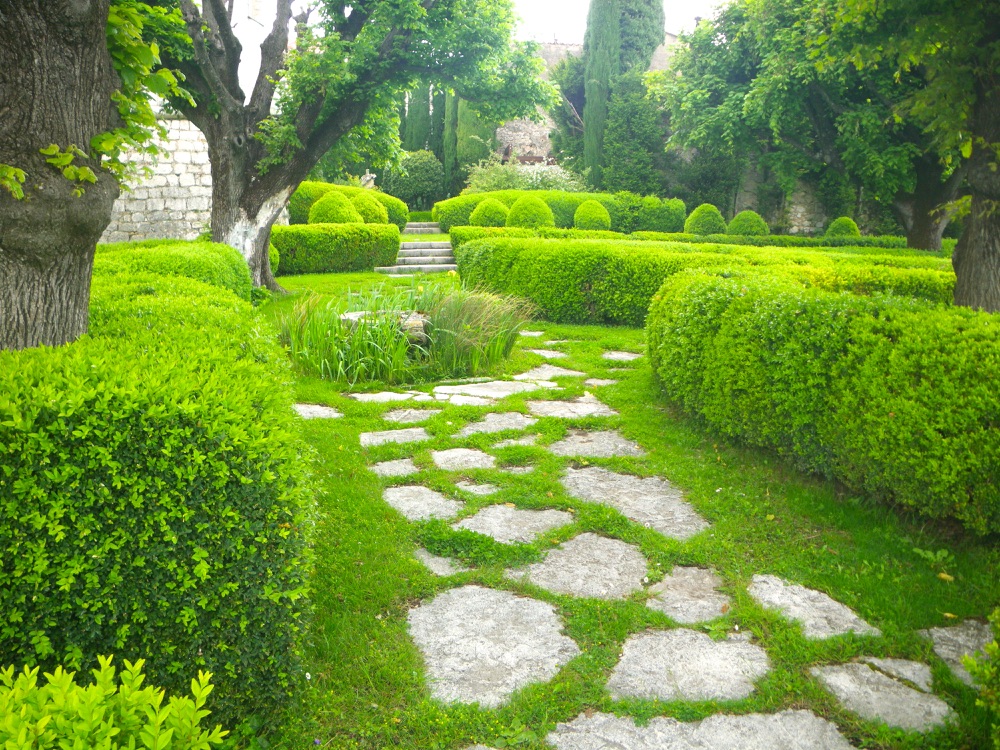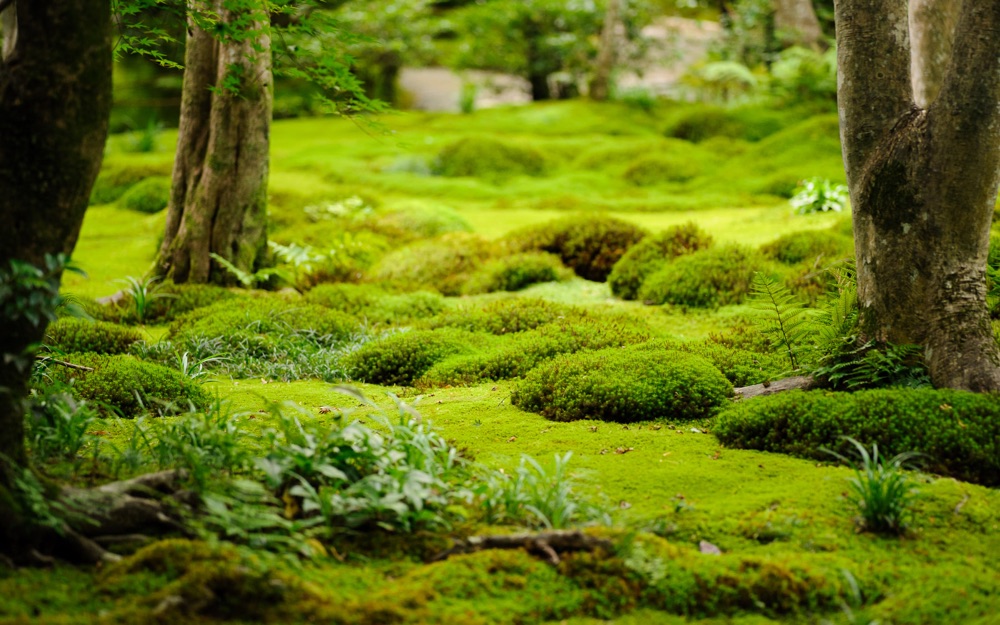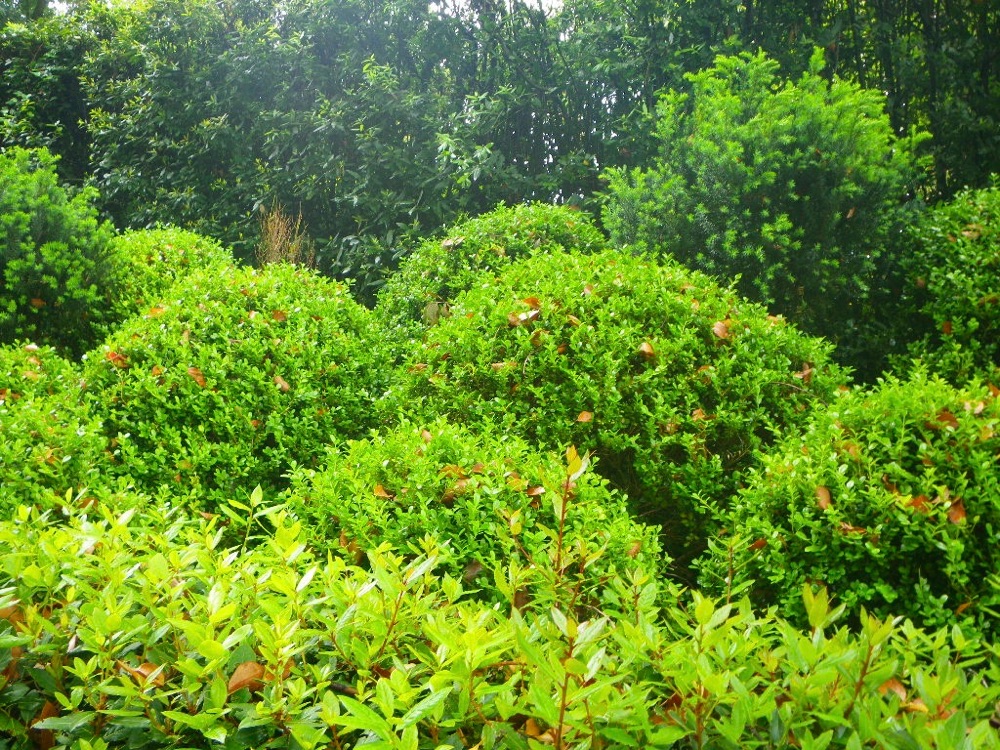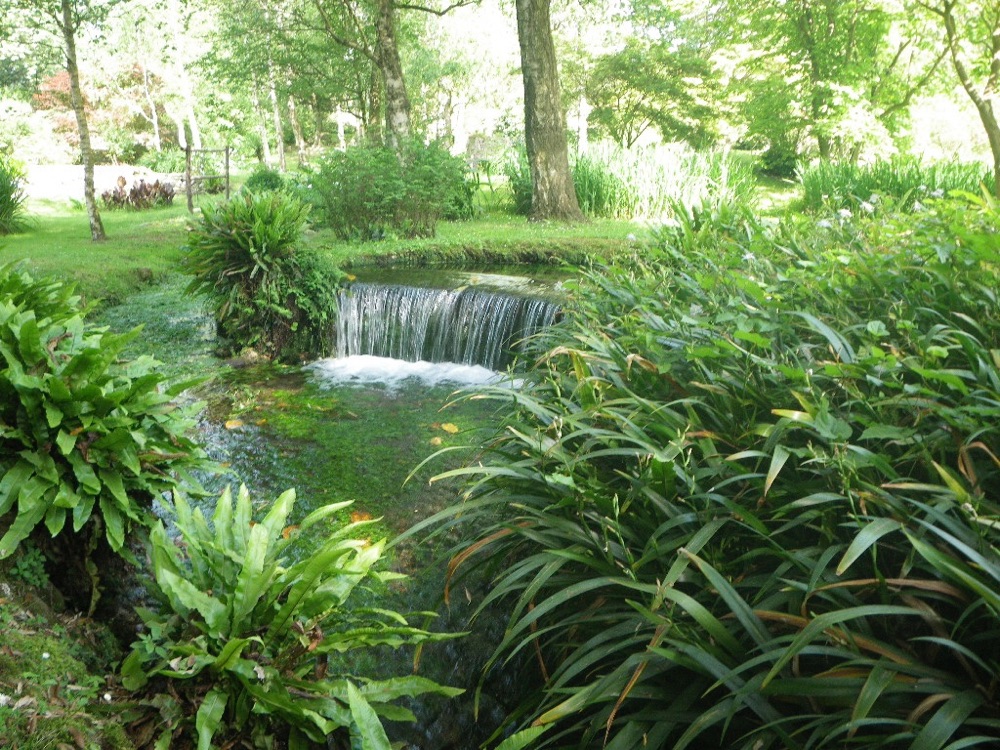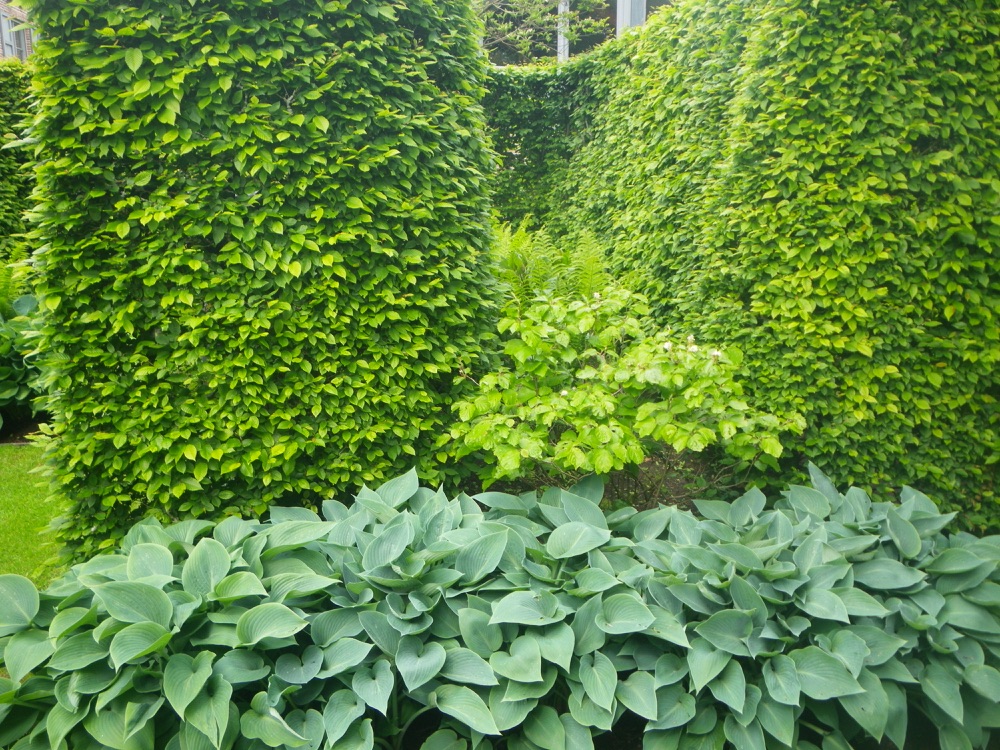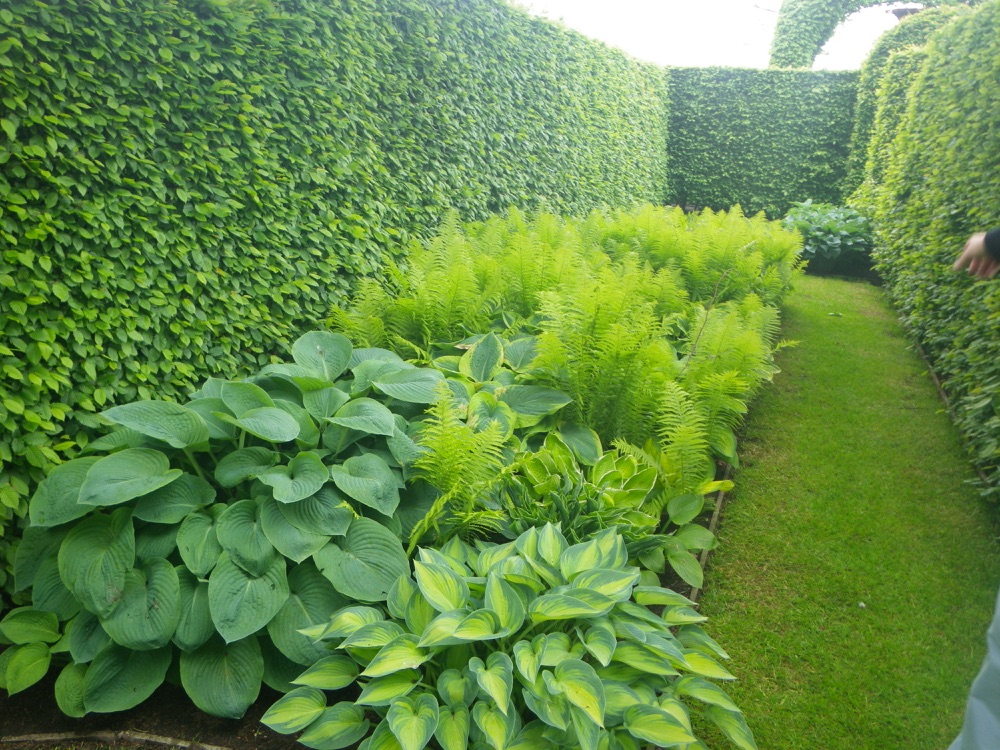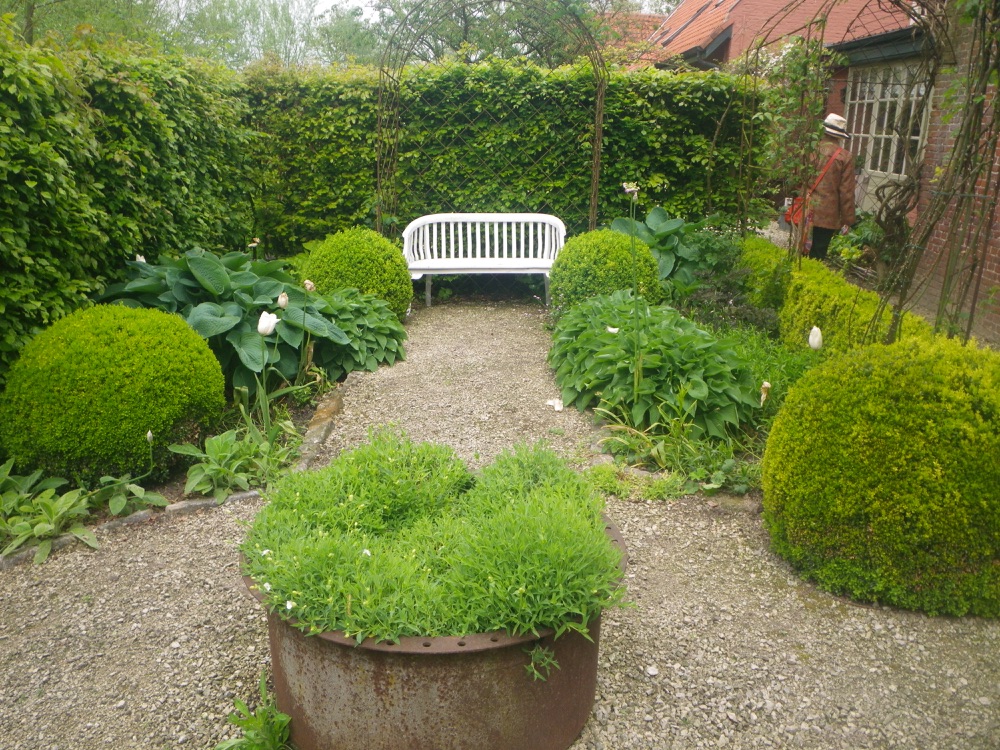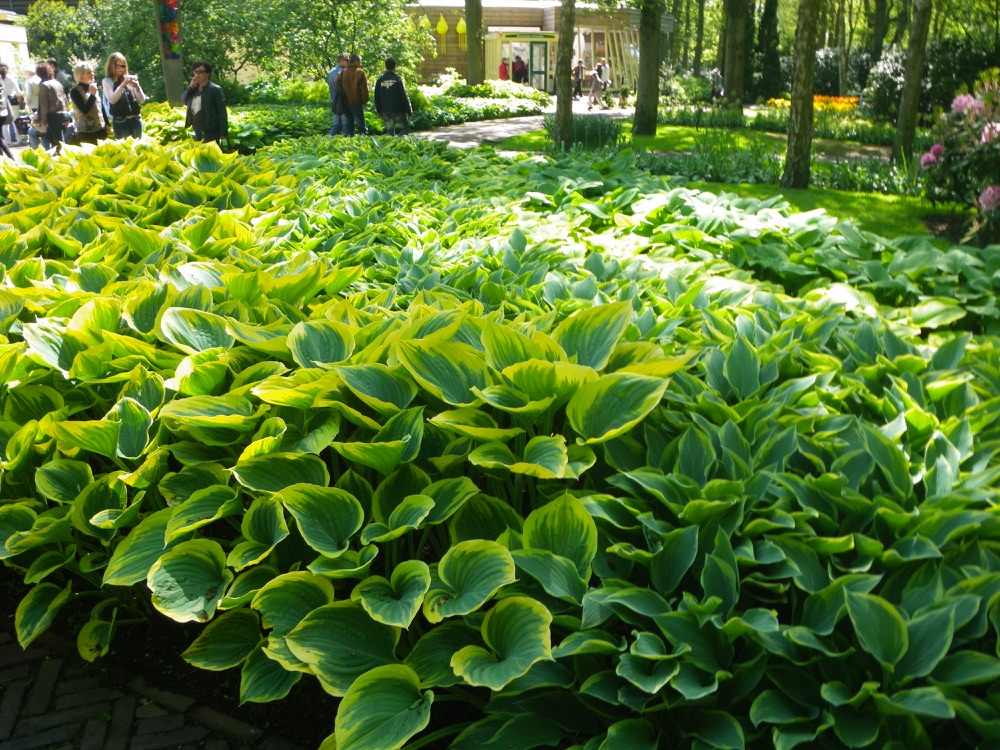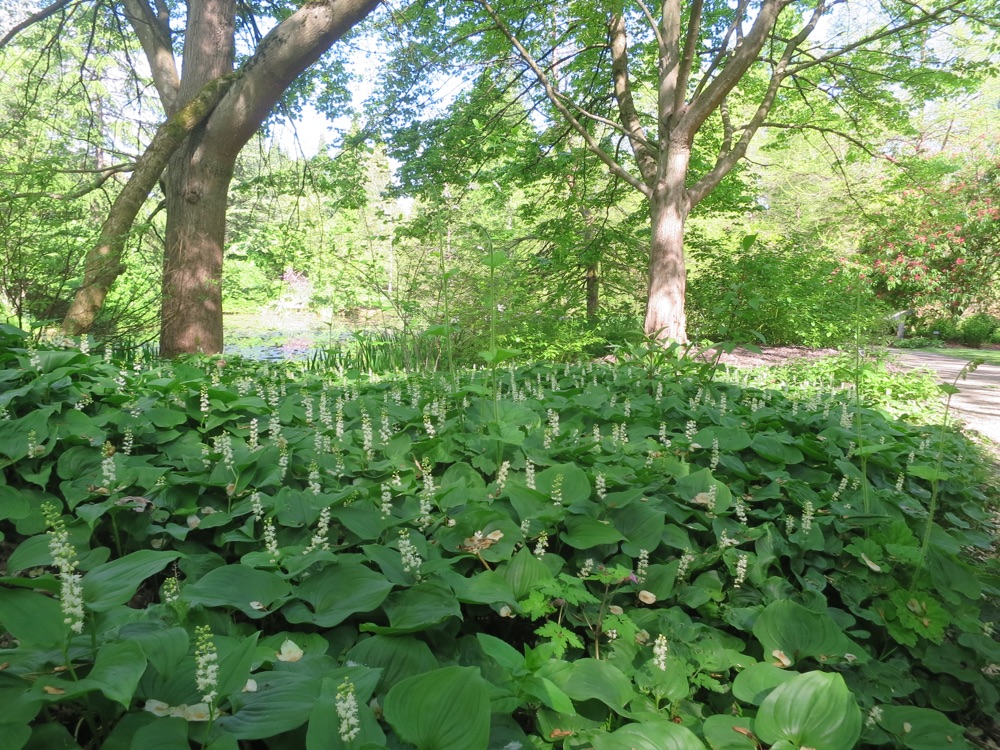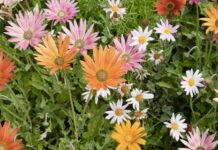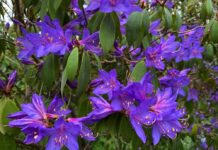Green-on-green is a style of planting that aims to create an elegant landscape by putting together a variety of plants with different shades and textures of green leaves.
An example would be a low boxwood hedge in front of rhododendrons or a row of blue-green hostas in front of a hedge of Japanese holly, skimmia or sarcococca with a neatly sheared yew hedge as a solid, dark green backdrop. The idea is not just to put plants with green leaves next to one another, but to combine plants to create stylish, attractive, sculptural shapes, patterns and rhythms.

I first became aware of this style of planting when I visited the orange and water gardens at Villa Landriana in Italy and noticed how Russell Page had used sheared layers of boxwood and yew as well as rows of clipped boxwood balls and orange trees along with carpets of various green groundcovers to create a serene, predominantly green landscape.
I was also very impressed by the extensive use of moss at Saiho-ji, the moss garden (Koke-dera) in Kyoto. The ground throughout this garden is carpeted with different types of moss in various shades of green.
In soft, dappled light that pours through the leaves of maple trees, the ground-hugging moss sweeps over the undulating woodland floor in beautiful wave patterns of green-against-green.
In my garden, I’ve been slowly changing the planting to create more green-on-green combinations, mixing various sizes and shapes of boxwood to create a cloud-like effect and cones alongside columns of blue chamaecyparis and clipped sarcoccoa against a backdrop of rhododendrons and evergreen azaleas.
Ideal plants for starting a green-on-green scheme include all of the ones mentioned above plus top ground covers such as periwinkle, Cotoneaster dammeri, spurge and big-leaf geranium (G. macrorrhizum) as well as various dwarf conifers, Viburnum davidii, nandina and cool season grasses, such as Carex ‘Ice Dance’ as well as Japanese forest grass (Hakonechloa macro aureola) and plain green mondo grass.
Some structural perennials, such as Euphorbia characias wulfenii, are also worth adding into a green-on-green theme. Hostas, rodgersia and acanthus are other good plants to feature.
Here are some photos of gardens where green is used to create a variety of textures and shapes in what I consider a green-on-green style.
